By: Rajendra Gupta | Comments (2) | Related: > SQL Operations Studio
Problem
SQL Server Management Studio is used as the default tool to connect to different SQL Server versions to manage SQL Server. Prior to SQL Server 2017, SQL Server Management Studio was only on the Windows platform. Microsoft recently launched a preview version of Microsoft SQL Server Operations Studio that runs on Windows, macOS, and Linux for SQL Server, Azure SQL Database, and Azure SQL Data Warehouse. In this tip, we will get an overview of SQL Operations Studio.
Solution
SQL Operations Studio is a free, light-weight tool for developers and administrators for SQL Server on Windows, Linux and Docker, Azure SQL Database and Azure SQL Data Warehouse on Windows, Mac or Linux machines. SQL Operations Studio is built on top of Visual Studio Code with the objective to make it highly extensible. Itís built on an extensible microservices architecture and includes the SQL tools service built on .NET Core.
SQL Operations Studio allows users to run command line tools such as PowerShell, BCP, SSH, Bash, etc. in the integrated terminal window inside the interface. It is also quite easy to view, generate and modify scripts with smart T-SQL code snippets and a rich graphical interface for database objects. DBAs can create customizable dashboards for monitoring which improves efficiency and quick turnaround for performance issues.
Before we move further, let's see how to install SQL Operations Studio.
SQL Operations Studio installation
SQL Operations Studio is currently in the January Public Preview. As mentioned earlier, SQL Operations Studio can be installed on Windows, Linux, MacOS as well. In this demo, we will have a look at the Windows version. You can find details for other OS installations in the Next Steps section.
Download the Windows installer from this link SQL Operations Studio (preview) installer for Windows.
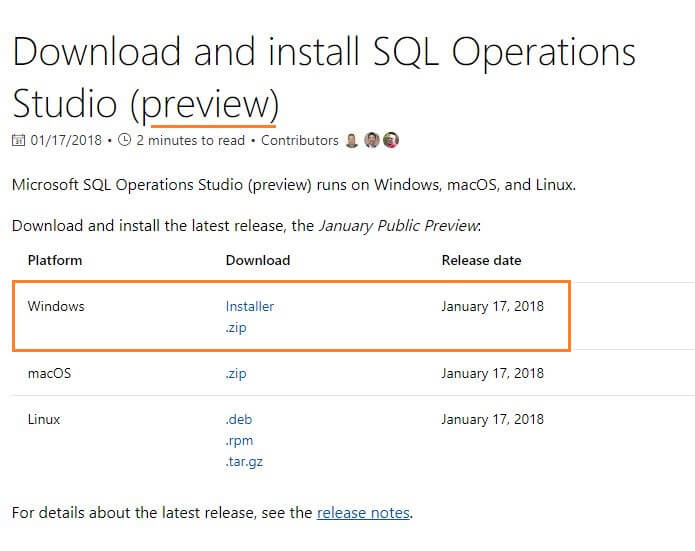
I have downloaded the Windows version for SQL Operations Studio and clicked on it to start the installation.
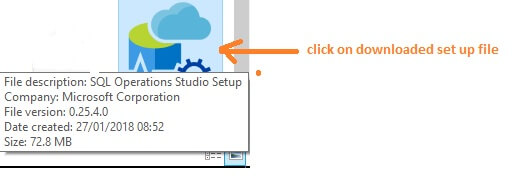
Click on the installation file to launch the setup process.
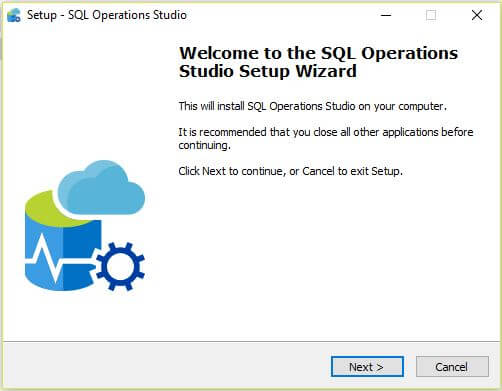
In next screen, accept the license agreement and click next.
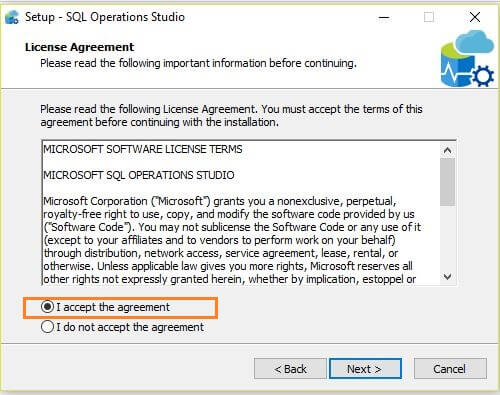
Select the SQL Operations Studio installation path, by default it will go to C:\program files\SQL Operations Studio.
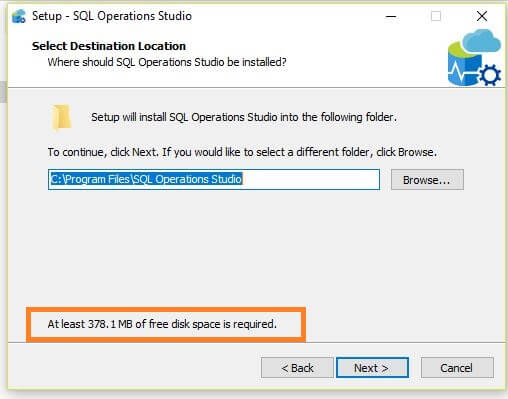
Select the Start Menu folder for SQL Operations Studio. If you don't want to create a start menu folder, click on the checkbox 'Don't create a Start Menu folder'.
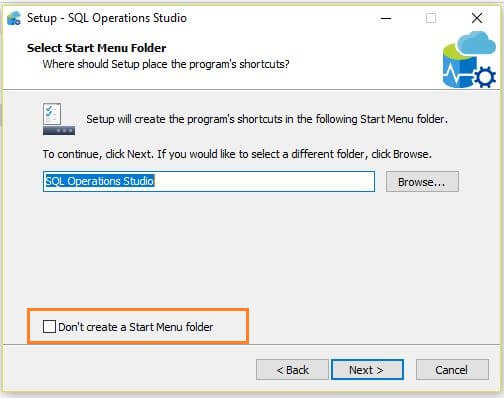
In the next screen, it will add the SQL Operations Studio folder path to the environment variable PATH. Please note that this will be available after system restart.
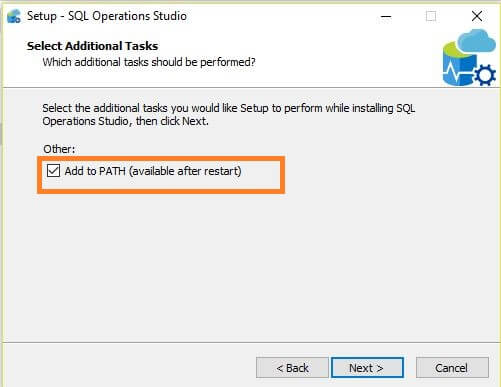
To see the PATH setting, go to Edit the system environment variables.
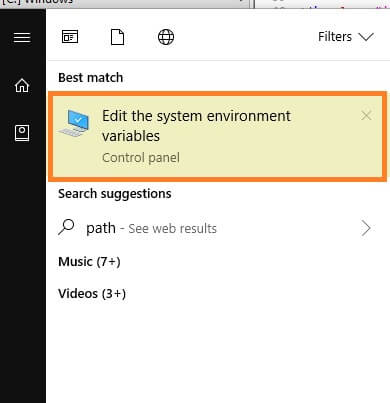
It opens the system properties windows as shown below. Click on Environment Variables and edit the PATH variable.
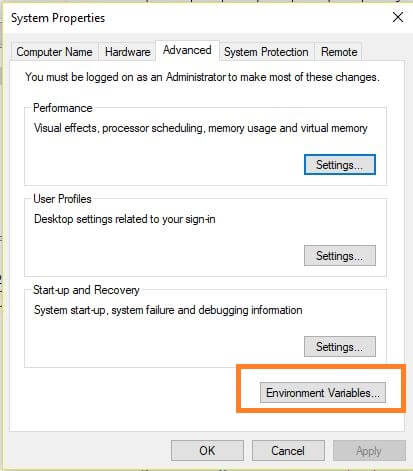
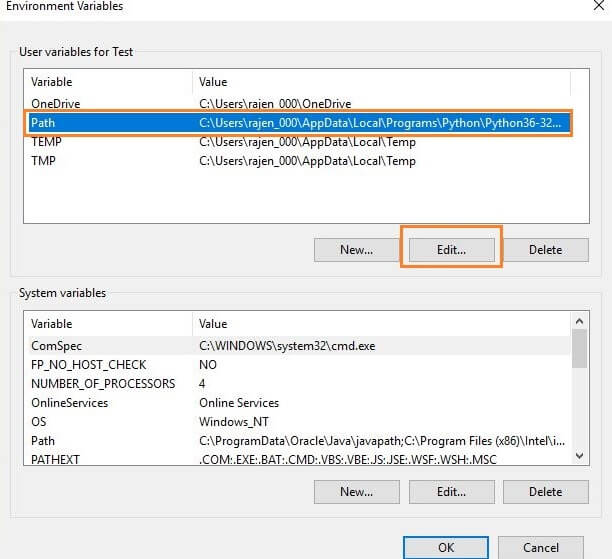
You can see the SQL Operations Studio folder path in the PATH variable and then click OK.

Now click on Next and you can see the settings, go back if you want to change any setting. Click on Install to start the installation process.
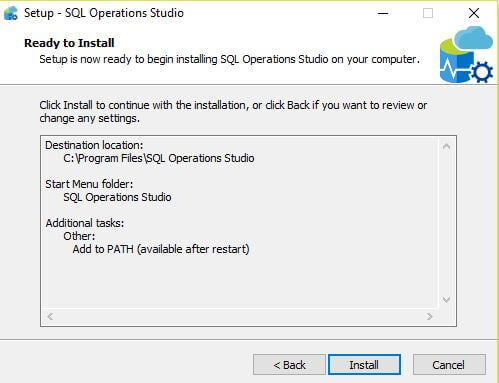
Set up is now starting the install.
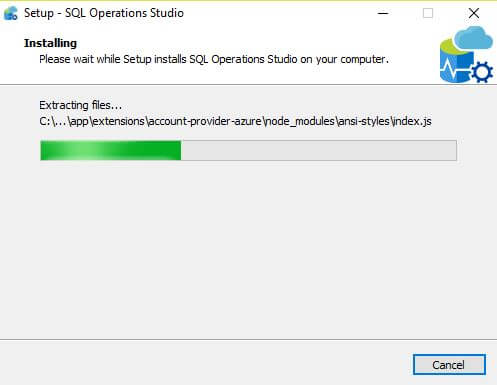
Once set up is finished, by default, it will launch SQL Operations Studio.
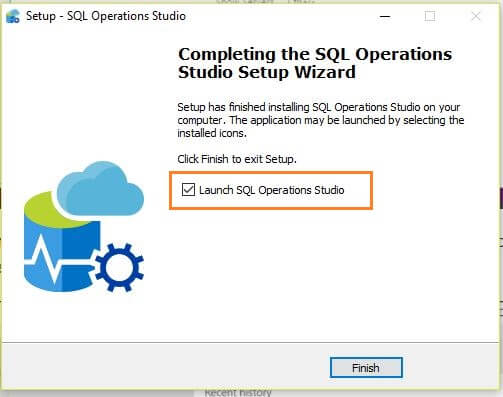
Overview of SQL Operations Studio
Once the installation is complete, we are now able to connect to SQL Server. The initial screen of SQL Operations Studio looks like the below image.
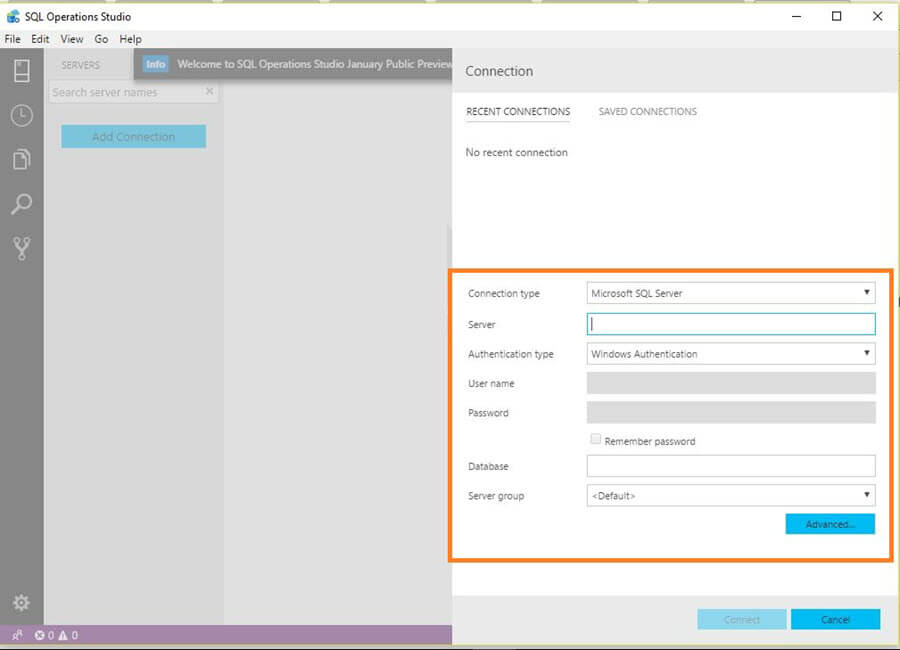
Fill out the connection information and click Connect. Unlike other tools, this version doesn't provide a dropdown list of databases, so if we want to connect to a specific database, we can type the database name in the database name field.
We can also click on Advanced to configure more connection options such as timeout, encrypt connection, port number, connection pooling, failover partner, etc.
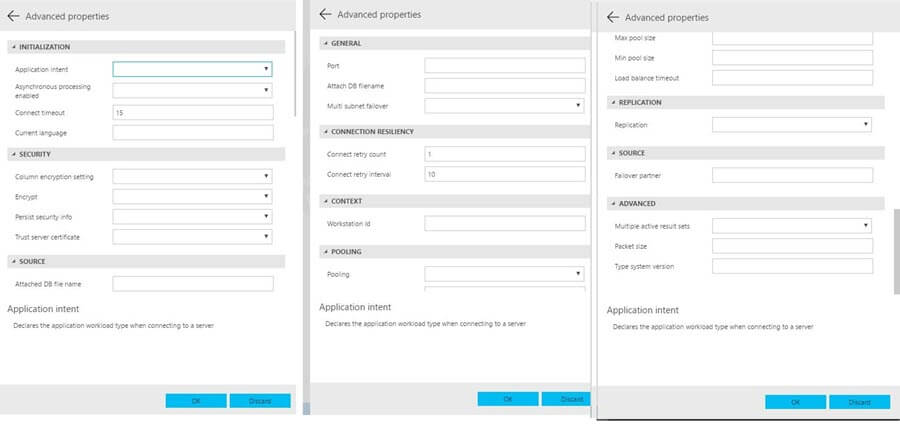
I have filled out the basic details like server name, authentication method as Windows authentication. In my case, I don't want to connect to a specific database, so I have kept it blank.
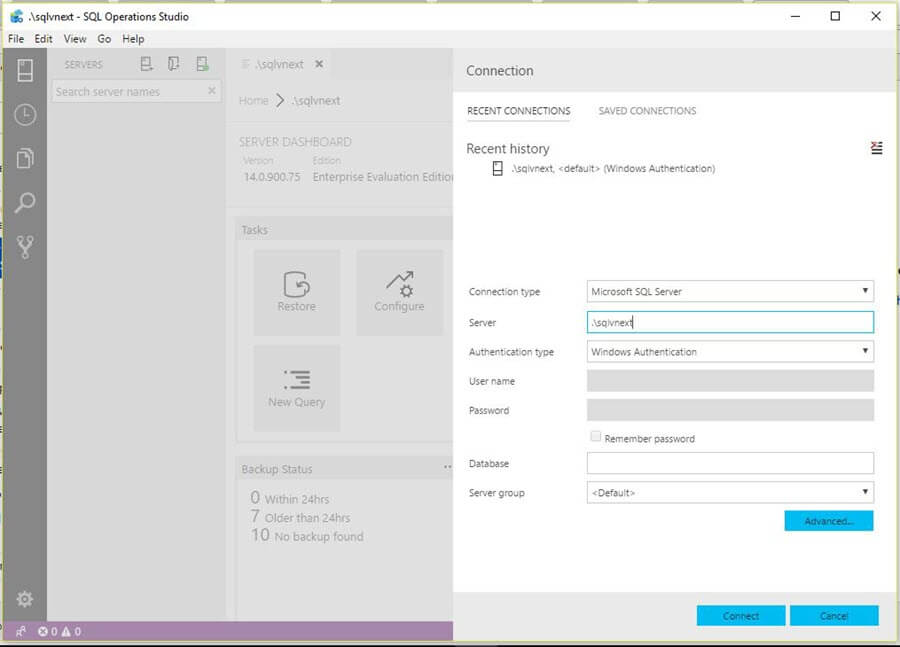
Once connected to the server, we can see the layout of SQL Operations Studio as below. I have numbered different areas of SQL Operations Studio to explain further below.
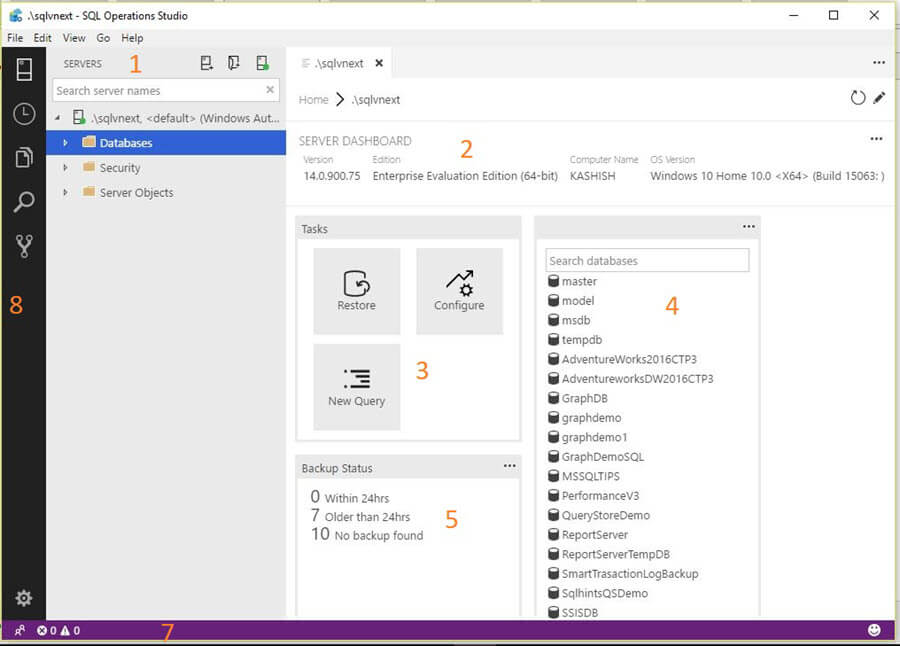
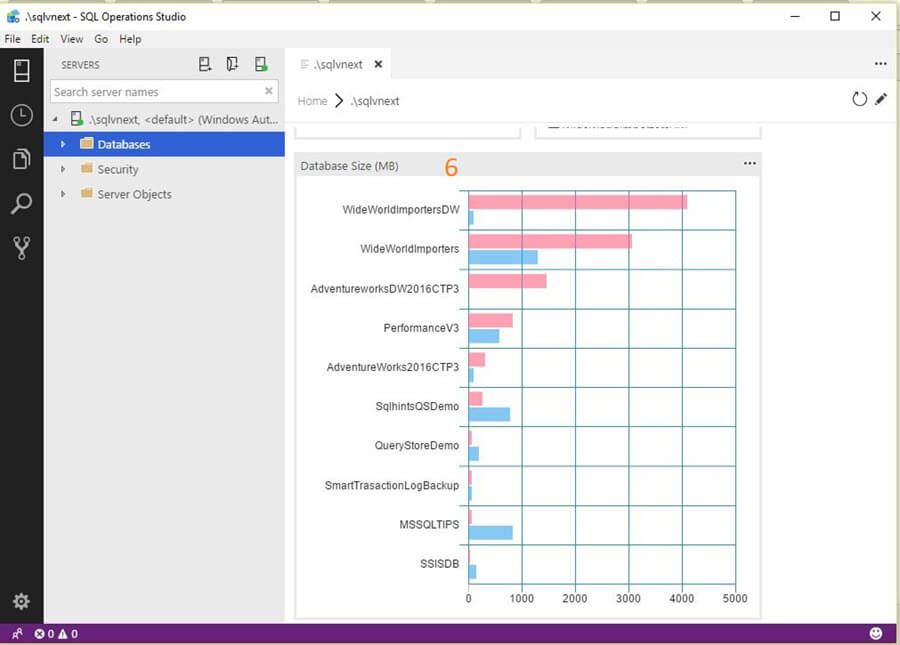
(1) Object Explorer
This area shows the servers pane where all the server connections will be listed. We can expand the server similar to SSMS and can view databases (tables, schemas, views, functions, stored procedures, etc.), Security (logins, credentials, audits, linked servers logins, server roles, etc.) and Server Objects (endpoints, triggers, linked servers, etc.).
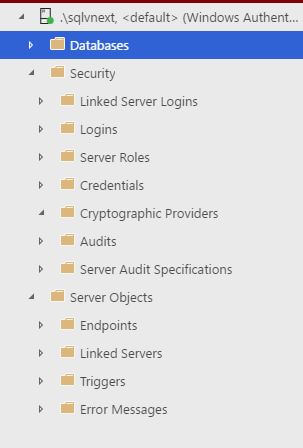
We can also create groups for the servers. One example is to group servers according to their roles production, QA, UAT, Dev, etc.
Click on the new server group.
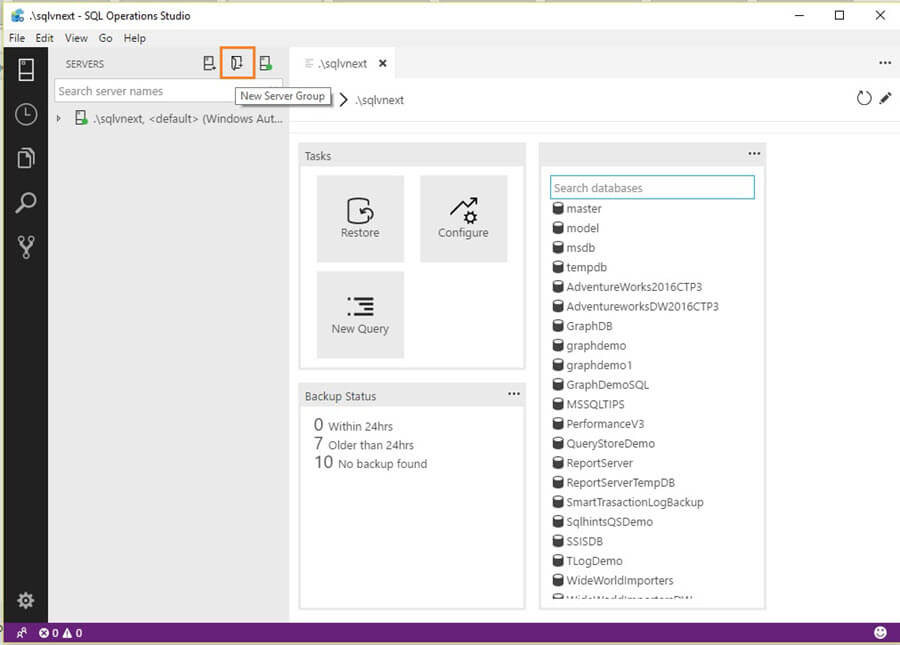
It opens a window to define the server groups and also we can choose the group color as well. This makes it easy to identify the server group based on the color code as well
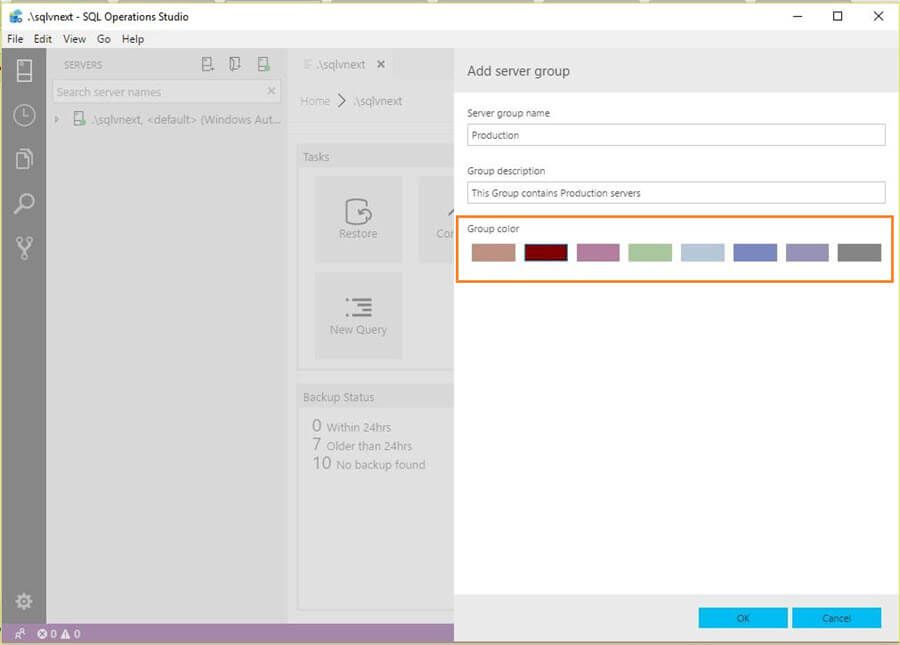
We can see below that the group is highlighted with the color we choose while creating it.
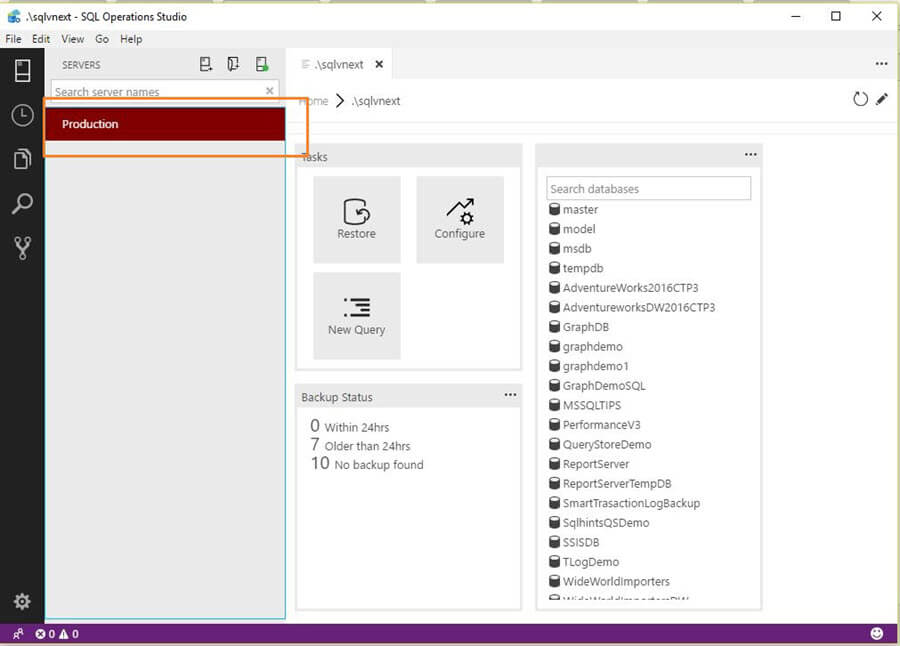
Now we can add the servers in their respective group by right click on group name followed by the new connection.
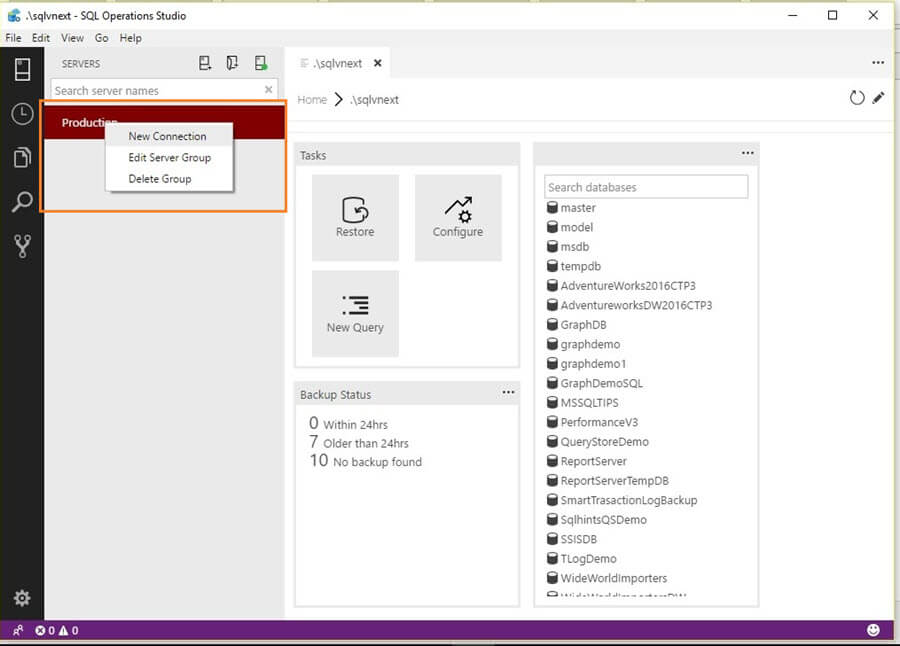
Fill out the connection details and server will be listed under the group.
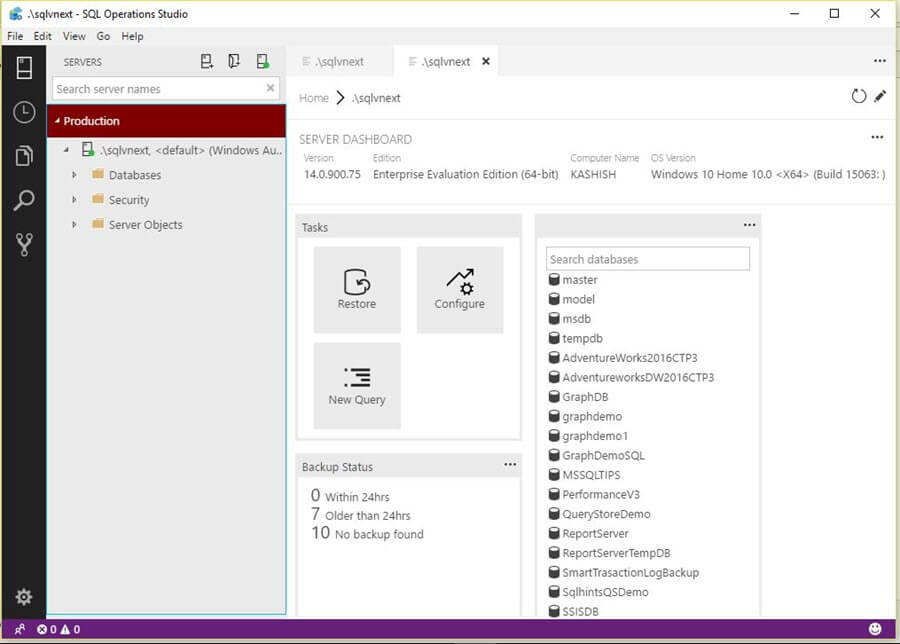
(2) Server Dashboard
Server Dashboard gives information about connected servers such as SQL Server Version, Edition, Computer Name and Operating System Version.

(3) Common Tasks
This area shows the common tasks to be performed. These common tasks are:
- Restore: Shortcut to launch a database restore
- Configure: Shortcut to configure your server. We will explore this with my future tips.
- New Query: To run a query, perform query analysis including execution plan overview, etc.
(4) Search Pane
This section provides a easy way to find database objects from the list of databases. We can simply start typing and it narrows down the database objects to match what was typed.
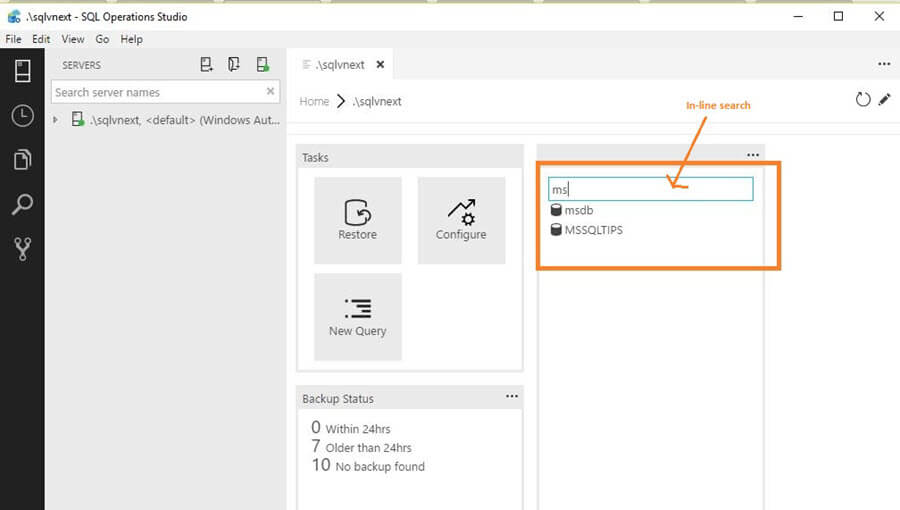
If we are connected to a specific database, we can search objects such as tables, stored procedures, etc.
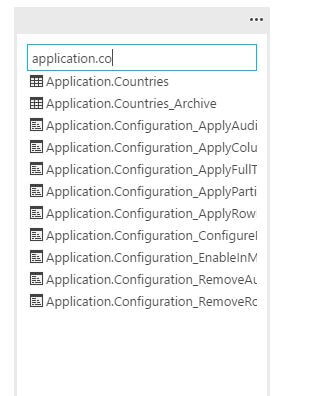
(5) Backup Status
This section provides backup status for the databases on the connected server. This is also very helpful information where we can quickly view the backup stats as:
- How many backups completed in last 24 hrs
- How many database backups are more than 24 hrs old
- How many databases for which no backups are present
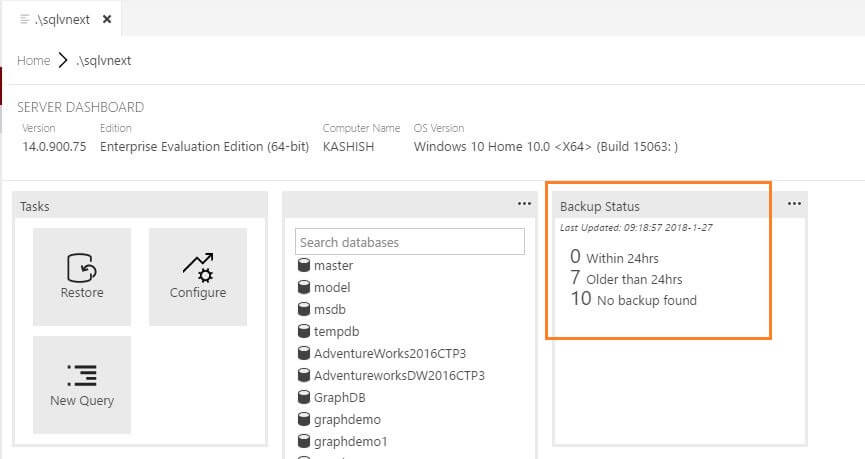
(6) Database Size Graph
This section provides a glance of sizes of various databases individually for the database and transaction logs file size.

This shows a graphical representation of the data file and log file space. If we hover the mouse over the graph on a particular database, it shows the file sizes for that database.
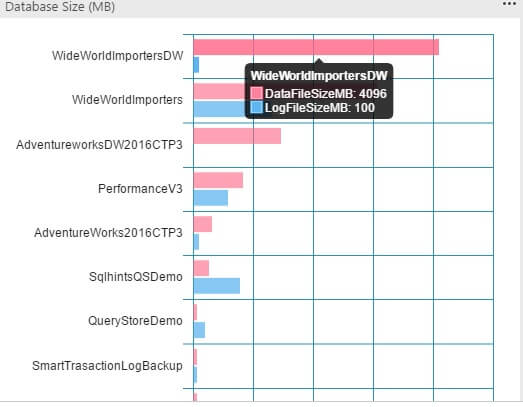
(7) Status Bar
This status bar is an interactive status bar to display a handful of information along with some relative information.

Below we can see the information, options in the status bar are:
- Managed linked account: If we are connecting with Azure, it shows the account information and also we can add the account here as well.
- Problems: If any problems occur such as a syntax error, execution error, etc. it will be noted here.
- Connection information: Connection information such as server name and database name.
- Cursor position: Shows the cursor position. Clicking on the current cursor position takes us to the specified line in the opened file.
- Indentation: Indentation can be changed to spaces or tabs. Clicking on Indentation opens up the below window and we can change Indentation from the list of options provided.
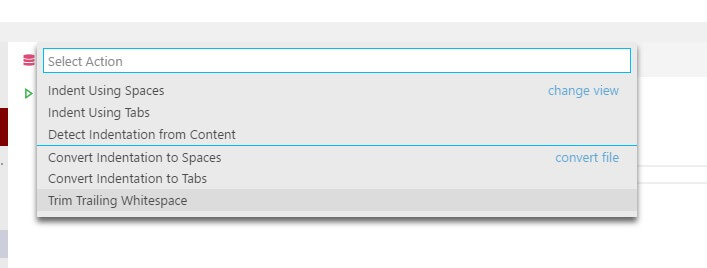
- Encoding: We can also view and change the encoding from here. Clicking on encoding provides an option to reopen or save with encoding.

If we click on Reopen with Encoding, it provides a list of encoding options.
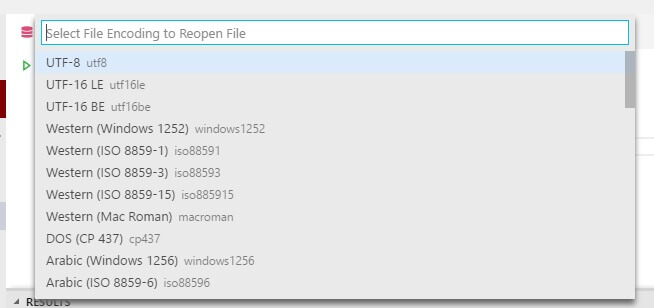
- End of Line Sequence: We can change the End of Line sequence to either LF or CRLF. You can read this tip for more about End of Line sequence.
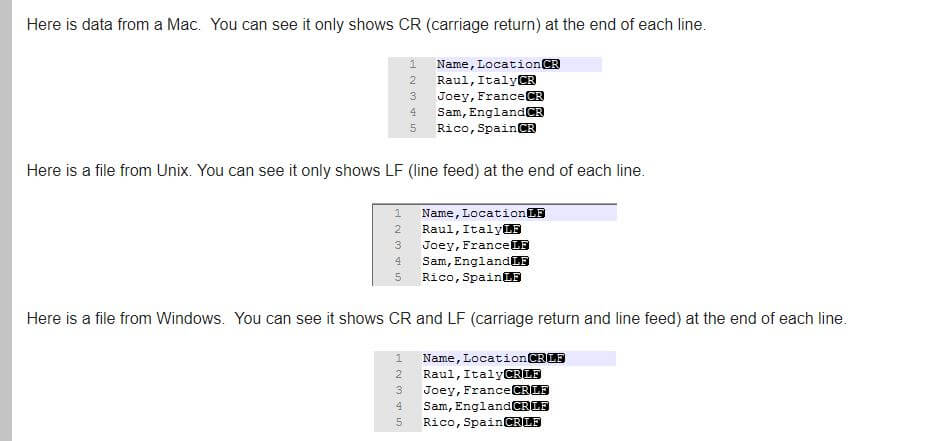
- Language Mode: We can select from a list of different language options. By default, it is set to SQL.
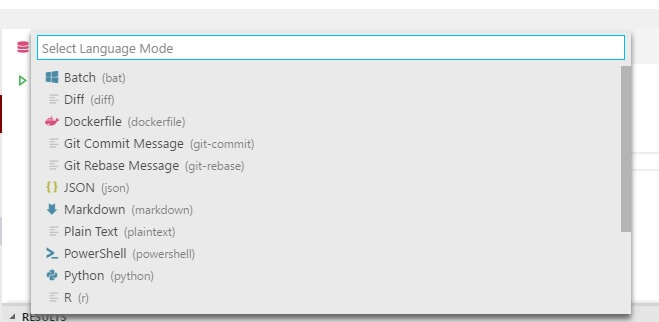
- Tweet feedback: Smiley face at the end provides you a possibility to quickly tweet feedback.
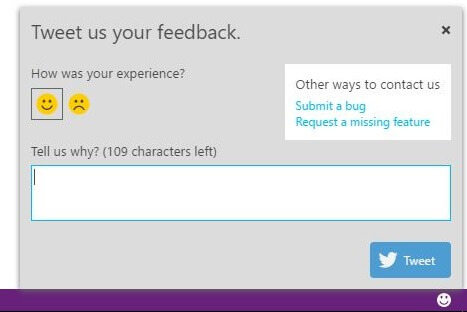
(8) Activity bar
The activity bar contains multiple tabs as shown below.
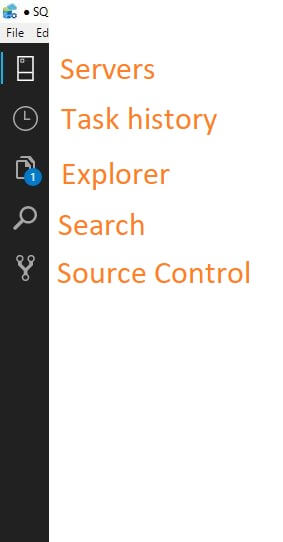
- Server Panel: Displays the servers group and servers listed.
- Task History: If we performed any activities such as backups, restores or other similar tasks, it shows the history of those tasks.
- Explorer pane: The Explorer Pane contains a list of all open files in the editor. If we have any unsaved files as well, it highlights them so that we can save them, if required.
If we right click on the file name, it provides a list of options:
- Reveal in Explorer opens up an Explorer window.
- Open in Terminal opens up a terminal window in the lower half of the SQL Operations Studio, by default it is PowerShell, but we can also change to a Command Prompt or a BASH terminal.
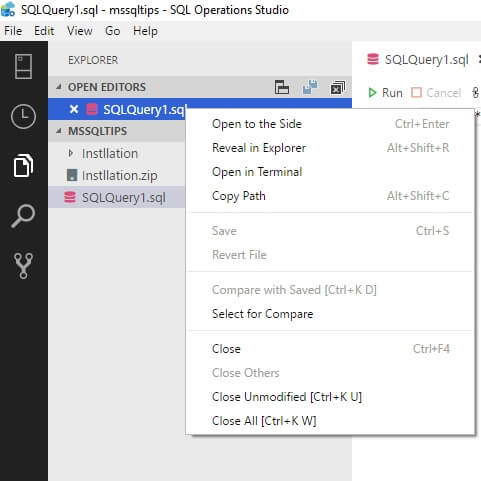
- Open to the Side opens the file in split screen, so we can compare two files side by side.

- Search: The Search pane opens up a pane that can be used to search, or search and replace, text in the current editor window.
- Source Control Pane: This allows us to manage various files within your source code control system.
- Settings: In the bottom lower side, we can get a setting menu. If we click on that, we get various interesting options.
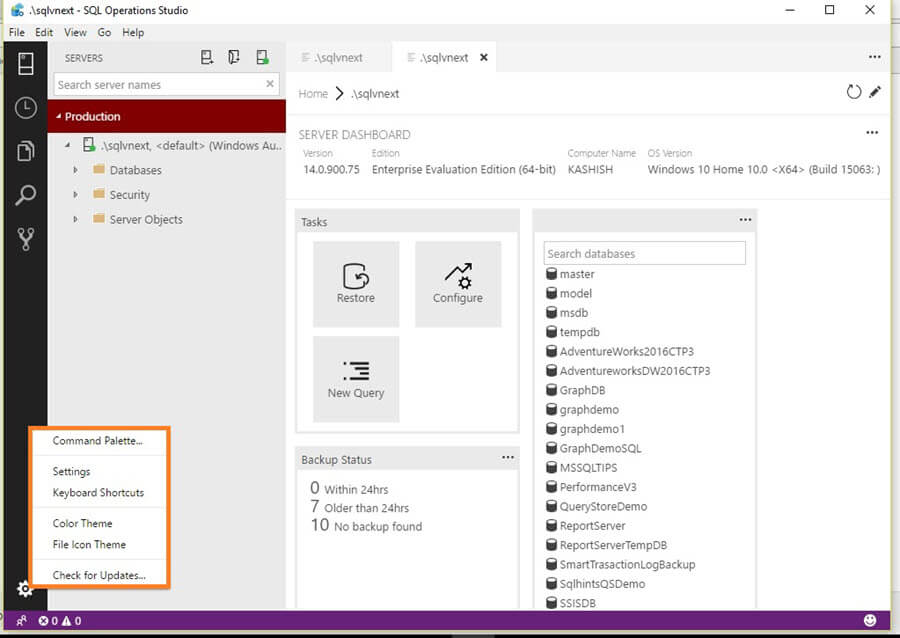
- Command Palette: We get multiple options out of command palette to ease our tasks.
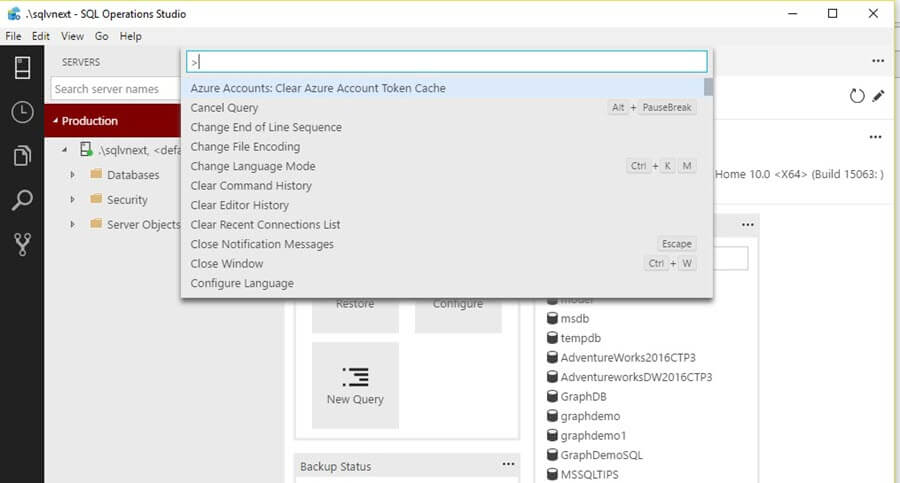
- It has inline search functionality, as soon as we type, it gives suggestions to choose from.
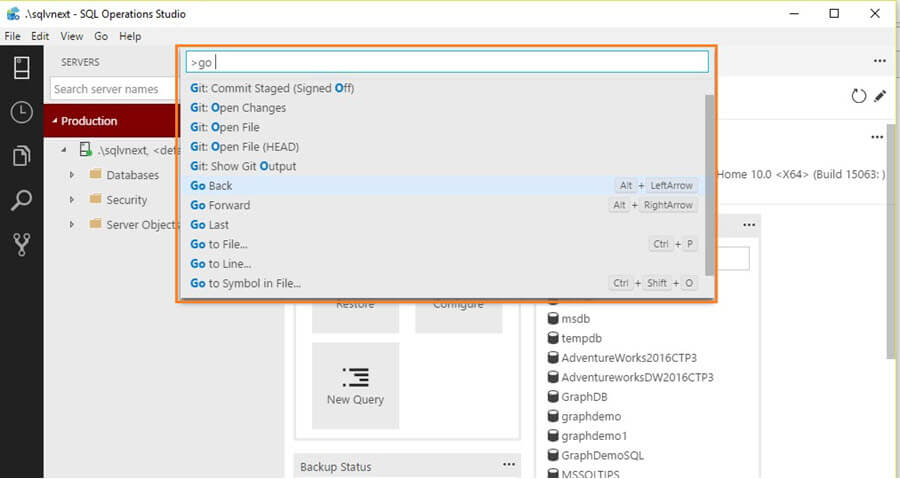
- Settings: Once we click on the Settings option, it provides a JSON editor with two screens: one for the default settings and another to override the default settings.
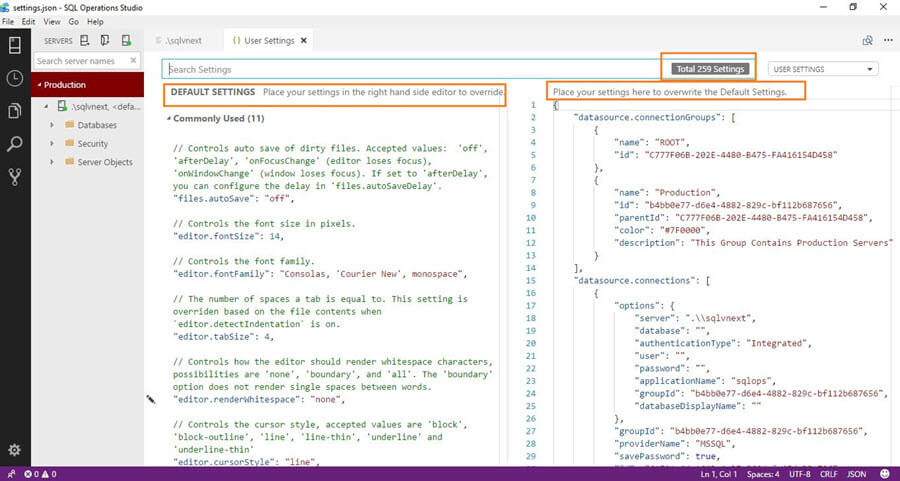
- Color theme: SQL Operations Studio has many more available color themes to choose from. Once we click on a color theme, it gives color theme options as:
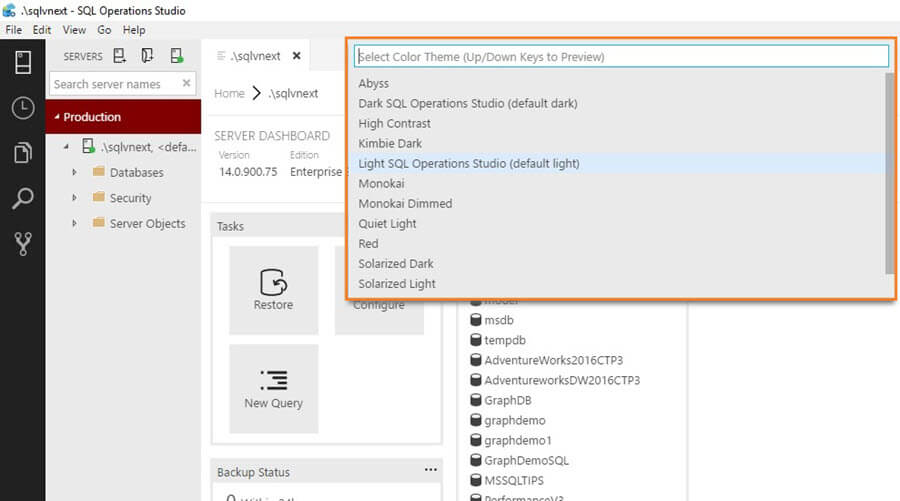
We can simply select the color theme and it immediately changes to that particular color theme.
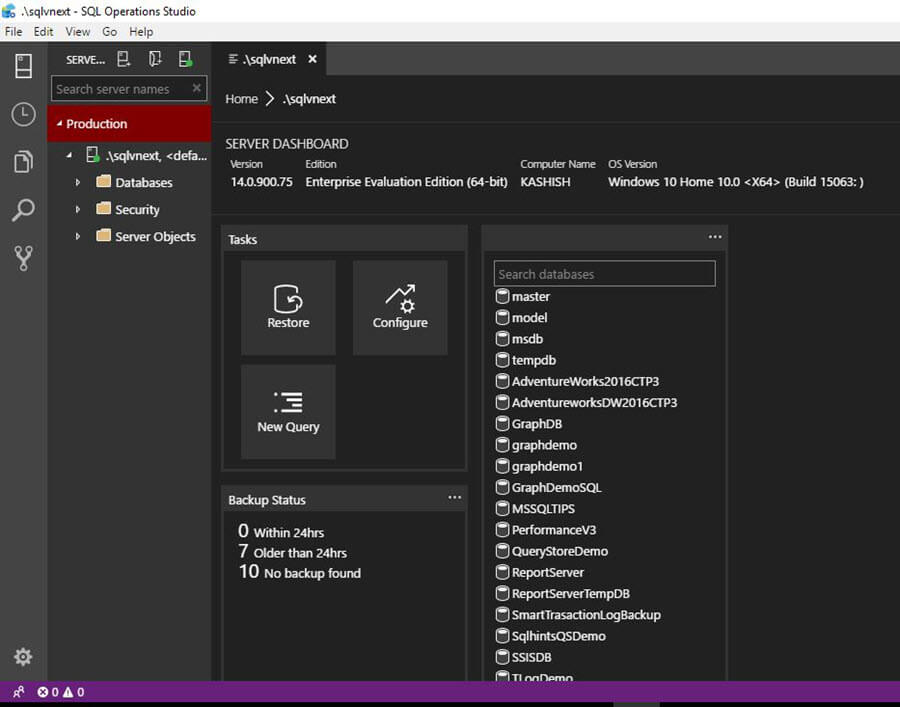
- Keyboard shortcuts: We can get list of all keyboard shortcuts after click on this option.
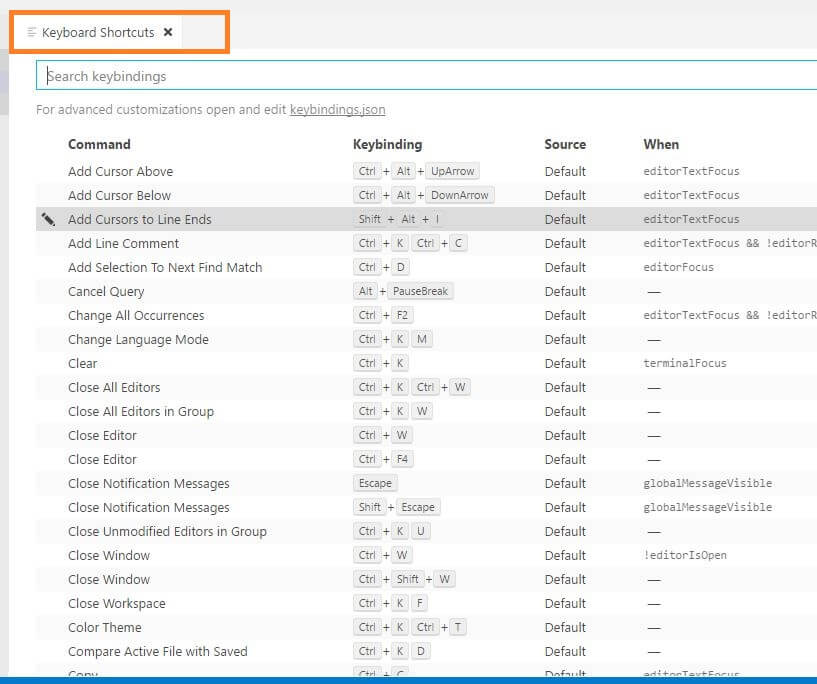
- Checking for updates: If an update is available for SQL Operations Studio, it will show that update so that we can apply it to use the latest version.

Summary
Currently, SQL Operations Studio is released as a Preview version. The tool is very useful and contains many interesting features. We will explore further on the SQL Operations Studio options such as executing a query, exploring execution plans, monitoring dashboards, etc. in future tips.
Next Steps
- Stay tuned for future tips on SQL Operations Studio.
- Check out SQL Operations Studio installation guide for multiple operating systems.
- Read more about SQL Operations Studio.
- Read more about SQL Server 2017 tips.
About the author
 Rajendra Gupta is a Consultant DBA with 14+ years of extensive experience in database administration including large critical OLAP, OLTP, Reporting and SharePoint databases.
Rajendra Gupta is a Consultant DBA with 14+ years of extensive experience in database administration including large critical OLAP, OLTP, Reporting and SharePoint databases.This author pledges the content of this article is based on professional experience and not AI generated.
View all my tips






